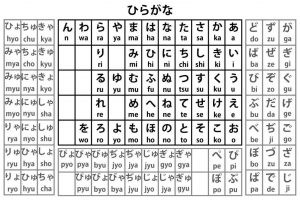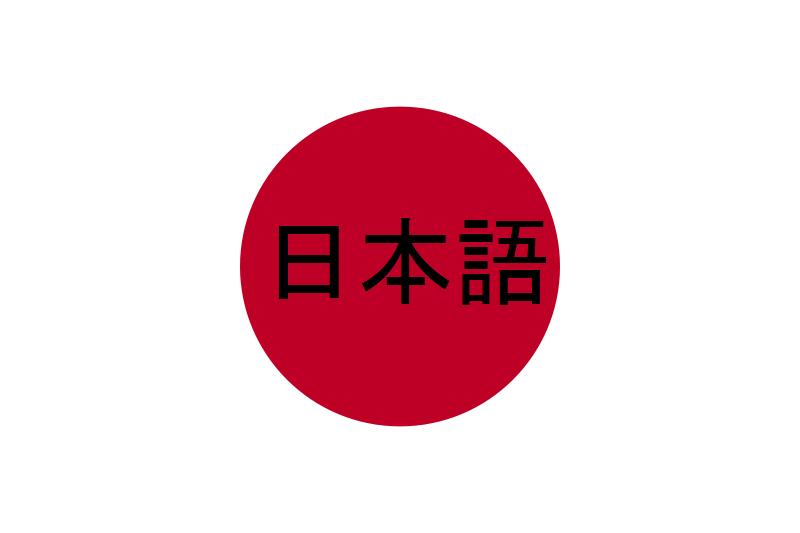Learning Japanese
Contrary to popular belief, Japanese isn’t harder to learn than other languages, it’s just misunderstood.
By Emily Suvannasankha, University of Central Florida
People love to go around claiming that Asian languages are nigh impossible for non-native speakers to learn.
Tell anyone walking down the street you’re learning Mandarin, for example, and Jimmy Joe from the strip mall jerky shop will deliver you a look of admiring astonishment so intense that you’d think you just said you were riding to the Chinese mainland on the back of a waterskiing gorilla.
Even the Foreign Service Institute of the U.S. Department of State professes that three of the four hardest languages for English speakers to learn are Asian: Chinese, Korean, and Japanese.
You know what I say to that? Poppycock!
As a certified, card-carrying half-Asian, I’m here to dispel all the cowardly flimflam in the West surrounding the tongues of the ol’ homeland. There’s no need to flock to Spanish or French if you’re looking to learn a rousing new language. The old standbys aren’t necessarily easier than the “super hard” Asian languages—they’re just different.
I’ve been teaching myself Japanese since I was twelve, so I can at least speak with authority on the unexpected simplicity of that reportedly daunting language. Considering the proliferation of anime and manga among young Westerners in recent times, Japanese is probably the most popular choice anyway!
Allow me to casually rip apart some myths about my favorite language in the world. Don’t worry, it’ll only hurt for a second.
Myth #1: There are three whole writing systems to learn!
Okay, so there are three “writing systems,” if you want to call them that. But I don’t, and here’s why: Two of them can be learned in less time than it takes to reach level 5 in Pokémon Go.
Hiragana and katakana are no harder to write than the Roman alphabet and only a bit longer; each uses the same set of 46 characters. Wait—whoa there, no need for tears! I know that sounds like a lot to someone used to a friendly, succinct 26-letter alphabet, but hear me out. What makes Japanese easier than English, at least in this respect, is that once you learn these 46 Japanese syllables and their (extremely simple) variations, you will never need to make another sound in your life.
 Admittedly, there is a real beast lurking within the language. It’s ugly, it’s menacing—and it’s frequently an enormous pain in the hindquarters. Its name? Kanji.
Admittedly, there is a real beast lurking within the language. It’s ugly, it’s menacing—and it’s frequently an enormous pain in the hindquarters. Its name? Kanji.
Kanji is the third “writing system,” the planet-sized monster people are usually talking about when they weave horror stories about the Japanese language. In the interest of keeping you conscious, I’ll spare you the “since the dawn of time” number of kanji in existence. All a regular Japanese learner needs to know is that there’s a nice short list of approximately 2,000 kanji (hold onto your sun hats, I promise you’ll live) you need to know to read a Japanese newspaper—which, let’s be honest, isn’t anyone’s first priority anyway.
Being able to read all the jōyō kanji is certainly an admirable feat, and at first, it would seem the obvious goal. But I have to argue that memorizing the whole list is unnecessary for someone who just wants to get a working, competent feel for the language. Don’t tell my Japanese teacher, but I’d advise learning to recognize just a handful at a time, aiming for perhaps a modest 100-400 of the most basic, non-threatening ones. Trust me, you’ll be leaps and bounds smarter than most of the tourists and the English teachers across the pond.
I know kanji look scary and messy and often more than a little complicated to Westerners unaccustomed to drawing pictures for communication, but 1. Radicals (the building blocks of kanji) exist, 2. No one writes by hand anymore, and 3. Japanese keyboards kanji-fy your hiragana for you. Technology, saving the day yet again.
Myth #2: Pronouncing things is hard!
I couldn’t name a language with easier pronunciation than Japanese if my mother’s life depended on it. Grab any two-year old off the street, and I’ll bet you they could speak Japanese perfectly based on sounds alone. (Okay, maybe no toddler-snatching, at least not while the cops are watching. I hear it’s frowned upon.)
A lot of the fear of Asian pronunciation comes from the notion that they all have tones, verbal inflections that change the meaning of words. Good news: That is a falsehood, my chums! Chinese and several Southeast Asian languages like Vietnamese and Thai are tonal, but Japanese, Korean, Malay, Indonesian, Tagalog and others are blissfully free from the vocal juggling that bewilders Westerners into white padded rooms.
Sure, English may only have 26 letters, but the amount of different sounds you can make when you put them together is astronomical—think the “xth” in “sixth,” the “squ” in “squirrel,” the “shr” in “shrink.”
Outlandish smushing of consonants makes English pronunciation an absolute nightmare to learn.
However, in Japanese, you can make the aforementioned total of 46 sounds, and that is it. Five vowels that sound exactly the same no matter the word. Fourteen entirely unambiguous consonants you can stick ‘em with. The end.
Dialects and natural slurring within conversation notwithstanding, you will never wonder how a Japanese word is pronounced, making the phrase “say it how it looks” revolutionarily accurate for once! As a native English speaker, this realization seemed nothing short of a miracle. No more of the hemming and hawing over, say, the long and short vowels in “ate” versus “apple.”
And don’t get me started on English’s homographs (“Close the window close to the classroom full of weeping ESL students”) and heteronyms (“Please excuse this shoddy excuse for a language”). It’s a wonder how anyone can speak English without exploding in the conflagrations of their own word-fumbling demise. Just set it to Wumbo, kids. Just set it to Wumbo.
Myth #3: It’s so different from English!
Different does not equal hard. In fact, in a lot of ways, Japanese’s differences from English make it way easier to learn. Take grammar, for instance. This is simplifying, of course, but Japanese conjugation is pretty much just jamming syllables at the end of a verb to say what you want to say.
For example, ikitakunakattara means “if you didn’t want to go.” Much like my last name, that scary behemoth of a word tends to scare the pants off people. However, Japanese is simply the opposite of English in that it uses one big word instead of a lot of little ones to convey several layers of meaning at once. Still quaking in your Pikachu slippers and losing count of the letters? Let me break it down for you.
Iki = go.
Taku = want.
Na = not.
Katta = did.
Ra = if.
Notice the omission of “you” and “to.” In Japan, pronouns are often implied and left unspoken, and in this case, “to” is an unnecessary particle. Another great thing about Japanese? No extraneous words like “the,” “a,” and even the plural “s” floating around for no reason. You want to specify how many origami robots you have, give a number, fool!
Here’s one more instance of total oppositeness being a good thing. Despite how Westerners unfailingly tend to pound the emphasis down on the second syllable of Japanese words and names (“Naruto,” “sakura,” “kimono”), you’re not really supposed to place any stress at all. If anything, the first syllable is generally the predominant sound (“Naruto,” “sakura,” “kimono”). And don’t even get me started on the butchered English pronunciations of the two biggest offenders, karaoke and kamikaze—what a disaster!
Anyway, all things considered, learning Japanese ain’t that hard.
Or at least, it’s certainly not the impossible feat of brain gymnastics that fearful nail-biters make it out to be.
It’s easy to get intimidated and shrink away from those walls full of unreadable text, but the pain’s all worth it when you find your mouth overflowing with the melodic stylings of the folk across the Pacific. After six years of fairly regular study, I’m rarely happier than when I’m chattering away in Japanese—and strikingly less socially inhibited! (Although that’s not saying much.)
And once you get past that giant unraveling scroll of kanji—only some of which are absolutely necessary to know!—you’re well on your way to becoming an honorary Asian.
Well, maybe not. But at least you and your body pillow will be able to read hentai in its original lyrical Japanese. Hallelujah.


















[…] of the mysteries that appear in the anime have ties to some aspect of Japanese culture, be it the language, food or even historical games. Several riddles that the main characters must solve are related to […]